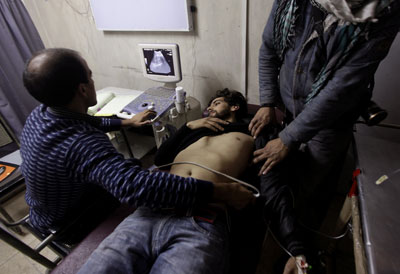Retired Supreme Court Justice Markandey Katju is shaking things up at the Press Council of India, where he was appointed chairman in October. The statutory body, mandated to look at media freedom and address complaints against the print media since 1966, has often been criticized for ineffectiveness, its role limited to admonishing news outlets.
The 65-year-old Katju is looking to change that. His support for media safety has earned him admiration from the media community. Yet his support for controls on electronic media has been criticized.
CPJ spoke with Katju about his strong response to recent attacks on the Kashmiri media by paramilitary forces in Srinagar, in India-administered Kashmir. Claimed by both India and Pakistan, Kashmir sees many violent protests. (The interview has been edited).
CPJ: What do you think provoked the police to attack journalists during the course of a demonstration in Srinagar on November 25?
Katju: As far as I know there was no provocation. There was a demonstration in Srinagar of some 300-400 people, mostly young men pelting stones. The Central Reserve Police Force hit back with rifle butts and sticks, or lathis. They also assaulted the journalists who were covering the attack, injuring Associated Press cameraman Umar Meraj and three other photographers, Yawar Nazir, Showat Shafi, and Shahid Tantray. The journalists were not provoking the security forces or participating in the demonstration. They were simply doing their job.
CPJ: In response to the assault, you wrote to the chief minister of Jammu and Kashmir, Omar Abdullah.
Katju: I wrote the letter on December 1, 2011 pointing out that this attack was a violation of 19-A of the Indian Constitution, which guarantees freedom of speech. The assault displayed how the state was failing to protect journalists. It is up to the state to provide safety to journalists, especially in areas of conflict. I also wrote that the Press Council is within its rights to file criminal proceedings against such security forces.
As a follow-up, I wrote a similar letter to the chief ministers of all the states of India and its union territories, as well as senior bureaucrats in Delhi responsible for homeland security. This is because paramilitary groups like the Central Reserve Police Force fall under the jurisdiction of the federal government, while the police fall under the purview of the various states of India.
CPJ: Was there any response?
Katju: Omar Abdullah responded in a letter that the attack could have been a case of mistaken identity. He suggested that in the future, media persons should wear “bright colored bibs” so that they could be easily distinguished by security forces. However, in this case in Srinagar, the journalists were photographers and video journalists and they were clearly carrying their equipment. It was evident that they were not carrying stones to pelt the police.
CPJ: What has been the impact of this letter?
Katju: The letters have been widely publicized; many newspapers carried them on their websites. The federal government has still to react. I have written to 28 members of the Press Council to come up with guidelines on such situations. I am also asking for suggestions from the media. (The media can write to me at mark_katju@yahoo.co.in). We can hold a meeting to work out some ground rules. We will take into account the concerns of the administration, but most importantly, we will look at the issue of media safety.
CPJ: It has been argued that since the situation on the ground in Jammu and Kashmir and states of Northeast India is very difficult, the administration and security establishment require stern measures.
Katju: Each region has its own unique problems, but that does not mean you physically assault the press. That goes against the Constitution. The freedom of the media cannot be trampled on; bullets and batons cannot be used to stop it from doing its duty…that will create bigger problems for the country.
CPJ: Why did the Press Council take up the issue at this particular point? After all, journalists in the Kashmir Valley have been targeted before. In his letter, the chief minister himself mentions how photographers went on a strike last year after security forces attacked them. In August this year there was a similar incident.
Katju: Every institution is defined by the person who is in charge. I cannot understand why the Press Council has in the past been called a “toothless tiger.” It can play a very powerful role in protecting the media and also giving it direction. Today, the media’s vision needs correction. The death of film star Dev Anand was a lead story in some of the country’s leading newspapers, but sadly the suicide of 250,000 farmers in Maharashtra does not get the same space.
